As the EU Green Deal was released last year, it already floated the idea to revise the newly adopted Energy Efficiency and Renewable Energy Directives. The latter were part of the 2018 Clean Energy Package, and, as the transposition deadlines was not even over yet, this came as a bit of a surprise to some.
But since then, it has become more obvious that these measures would need to be upgraded. The impetus behind the Green Deal is still alive and the EU has pushed on with its key actions, such as the increased 2030 GHG target, in spite of the Covid19 crisis. And the latter has been preceded by other announcements from the Commission on System Integration, Hydrogen, or on the Climate Law, all together making the case for an upwards revision.
Indeed, it has become clear that the EU requirements for energy efficiency and renewable energy have to be increased, if only to match the ambition of the other initiatives.
In addition to climate objectives, the Covid19 crisis came to shuffle the debates and add the need for an economic recovery to this equation. While some saw this as an opportunity to delay Green Deal strides, most are in agreement over the economic potential of a green recovery. With renewables being cheaper than fossil energy all the while being more labour-intensive (and thus job-creating), the need for unprecedented coordinated financial action at EU level could just be the opportunity needed to truly achieve the aims of the Green Deal.
A green recovery investing in developing energy efficiency and renewables means that an early upwards revision of the two directives should not encounter too much resistance. And certainly not from the electrical contracting sector.
Electrification has become a no-regret and no-brainer option to decarbonise major parts of the EU economy, whether it’s for buildings or transport. Further, the trend is towards decentralisation, powered by the growth of rooftop solar PV and associated flexibility technologies such as storage solutions coupled with energy management systems. Electrical contractors are thus on the frontline of this transformation and are poised to reap the benefits of the scale-up of clean energy.
EuropeOn has been working with the Electrification Alliance to highlight some recommendations from the power sector ahead of this revision:
- Adopt an upwards revision of the EU’s 2030 renewable and energy efficiency targets to support the increased 2030 greenhouse gas emissions target, including an update of the sectoral target for the use of renewable energy in heating.
- Prioritize direct electrification of all end-use sectors combined with energy demand reduction and the deployment of renewable electricity sources, as the most cost-effective way to decarbonise the EU.
- Ensure that administrative procedures support the development of renewable energy projects to successfully meet the EU renewable energy target
- Enhance demand-side flexibility across all sectors to smartly manage an energy system with large shares of renewables and to reduce unnecessary grid investments.
- Ensure the Primary Energy Factor (PEF) supports increased system efficiency delivered by electrification in end-use sectors.
- Create a Clean Energy Package (CEP) Implementation Platform to promote best practices in Member States’ decarbonisation strategies and share technical guidance.
- Renewable-based indirect electrification could play an important role to decarbonise “hard to abate” sectors such as heavy industry, aviation, and shipping, where direct electrification may be less cost effective
The European Commission intends to release its revision proposals in June 2021.
Download the full paper here.
